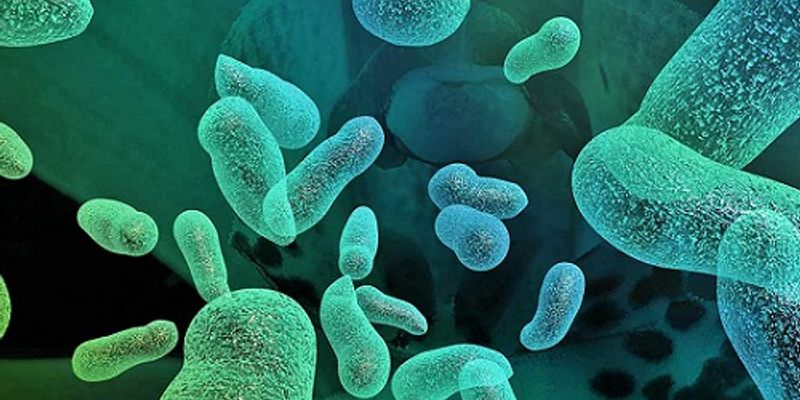Biology
Biology: the study of living organisms, divided into many specialized fields that cover their morphology, physiology, anatomy, behavior, origin, and distribution. This includes plants, animals, and other qualities of organisms or class of organisms.
-
SEP 08, 2016 | 1:30 PMMulti-Drug Resistant Organisms (MDROs) are becoming a bigger and bigger concern throughout the world. Antibiotic resistance forms and spreads faster than pharmaceutical companies have been ab...SEP 08, 2016 | 12:00 PMThis presentation will be demonstrating several different approaches to explore the diversity, function, and ecology of microbial communities. In Metagenomics, the sequencing of DNA dir...SEP 08, 2016 | 12:00 PMVirus Ecology is a field that is gaining momentum, fueled in part by metagenomic studies from many environments previously ignored. Biodiversity studies of plant viruses show that they...SEP 08, 2016 | 10:30 AMThe global trend towards industrialization and urbanization has led to ever more people living and working indoors. Some studies estimate that humans in industrialized countries spend as much...SEP 08, 2016 | 9:00 AMME/CFS is a debilitating disease with a controversial history and multiple names. The Institute of Medicine recently recommended renaming the disease “Systemic Exertion Intoleranc...SEP 08, 2016 | 7:30 AMOur speaker, Wenjie Xu, Ph.D., will present his publication data demonstrating how nCounter® technology can advance your infectious disease research faster and more accurately with unprec...SEP 08, 2016 | 7:30 AMThe Infectious Diseases Pathology Branch of the Centers for Disease Control and Prevention (CDC) routinely receives autopsy and biopsy tissues for diagnostic evaluation. These tissues are typ...SEP 08, 2016 | 6:00 AMThe research community has begun correlating the makeup of individual microbiomes with disorders and diseases such as obesity, atherosclerosis and cancer. To accomplish this, researchers must...Speaker: Krishnan Allampallam, PhDPresented at: Microbiology & Immunology Virtual Event Series 2016
SEP 07, 2016 | 1:30 PMHealthcare associated infections can be a consequence of a microbiome alteration. Increasingly, treatment and prevention strategies focus on manipulating host microbiota, the two most common...SEP 07, 2016 | 1:30 PMIt is well accepted that microorganisms can exist as self-organized communities attached to surfaces and one another (i.e., biofilm), often surrounded by extracellular polymeric substances (E...SEP 07, 2016 | 12:00 PMCommunity acquired pneumonia affects over 5 million Americans and 6 million Europeans annually. Typically 5-10% will be admitted to hospital. It is a condition that more often affects the eld...Speaker: Glenn Tillotson, PhD, FIDSA, FCCPPresented at: Microbiology & Immunology Virtual Event Series 2016
SEP 07, 2016 | 10:30 AMThe human body is populated with trillions of microorganisms, collectively termed the human microbiome, that play vital roles in health including nutrition and metabolism, immune development,...SEP 07, 2016 | 10:30 AMThe field of infectious disease diagnostics is ever changing with both newly identified infections such as SARS, Ebola, and Zika virus as well as yearly epidemics and potential for pandemic w...SEP 07, 2016 | 9:00 AMIn an era of healthcare reform and evidenced-based medicine, it is important to use the most clinically relevant and cost effective methods in all aspects of microbiology. This session will c...SEP 07, 2016 | 7:30 AMDespite FDA-approved vaccines and antivirals, seasonal and pandemic influenza remains a serious threat associated with substantial morbidity and mortality. The present modalities and va...SEP 07, 2016 | 6:00 AMThe human race, like all macrobiological life, evolved in a sea of microbes. There was no way to keep the bacterial and archaeal hoards at bay, so instead life evolved mechanisms to live with...SEP 07, 2016 | 6:00 AMOxford Nanopore’s MinION is a small sensing device which can sequence DNA and RNA directly, without the need to perform an enzymatic synthesis reaction. The device is portable and is po...AUG 30, 2016 | 8:00 AMOver the last 15 years, human pluripotent stem cell (hPSC) technologies have progressed from academic curiosities into tools with the promise to underpin commerce, leading to real progress in...AUG 30, 2016 | 8:00 AMThe reprogramming of somatic cells into induced Pluripotent Stem Cells (iPSC) has great potential of applications, not only in basic research, but also in drug screening and cell therapy. Wit...Speaker: Rene Quintanilla Jr.Presented at: 4th Annual 24 Hours of Stem Cells™ virtual event
Sponsored By: Thermo Fisher Scientific, Thermo Fisher ScientificAUG 30, 2016 | 8:00 AMAccess this training to learn more about different techniques that can be used for successful colony selection and passage of induced pluripotent stem cells....Speaker: Chad MacArthurPresented at: 4th Annual 24 Hours of Stem Cells™ virtual event
Sponsored By: Thermo Fisher Scientific, Thermo Fisher ScientificAUG 30, 2016 | 8:00 AMNeurons derived from human pluripotent stem cells (hPSCs), including embryonic stem cells (ESCs) and induced pluripotent stem cells (iPSCs), are excellent resources for disease modeling and d...Speaker: David Kuninger, PhDPresented at: 4th Annual 24 Hours of Stem Cells™ virtual event
Sponsored By: Thermo Fisher Scientific, Thermo Fisher ScientificAUG 30, 2016 | 8:00 AMStem cells, specifically induced pluripotent stem cells (iPSCs), offer exciting potential for the future of cell therapy and regenerative medicine. More recently, genetic engineering of stem ...Speaker: Nektaria AndronikouPresented at: 4th Annual 24 Hours of Stem Cells™ virtual event
Sponsored By: Thermo Fisher Scientific, Thermo Fisher ScientificAUG 30, 2016 | 8:00 AMThe human enteric nervous system (ENS) is derived from the neural crest and represents a complex network of ~500 million neurons with dozens of distinct neurotransmitter and hormone subtypes ...AUG 30, 2016 | 8:00 AMNeuropathic pain and bladder dysfunction represent significant quality of life issues for many spinal cord injury patients. Loss of GABAergic tone in the injured spinal cord may contribute to...
SEP 08, 2016 | 1:30 PM
Multi-Drug Resistant Organisms (MDROs) are becoming a bigger and bigger concern throughout the world. Antibiotic resistance forms and spreads faster than pharmaceutical companies have been ab...
SEP 08, 2016 | 12:00 PM
This presentation will be demonstrating several different approaches to explore the diversity, function, and ecology of microbial communities. In Metagenomics, the sequencing of DNA dir...
SEP 08, 2016 | 12:00 PM
Virus Ecology is a field that is gaining momentum, fueled in part by metagenomic studies from many environments previously ignored. Biodiversity studies of plant viruses show that they...
SEP 08, 2016 | 10:30 AM
The global trend towards industrialization and urbanization has led to ever more people living and working indoors. Some studies estimate that humans in industrialized countries spend as much...
SEP 08, 2016 | 9:00 AM
ME/CFS is a debilitating disease with a controversial history and multiple names. The Institute of Medicine recently recommended renaming the disease “Systemic Exertion Intoleranc...
SEP 08, 2016 | 7:30 AM
Our speaker, Wenjie Xu, Ph.D., will present his publication data demonstrating how nCounter® technology can advance your infectious disease research faster and more accurately with unprec...
SEP 08, 2016 | 7:30 AM
The Infectious Diseases Pathology Branch of the Centers for Disease Control and Prevention (CDC) routinely receives autopsy and biopsy tissues for diagnostic evaluation. These tissues are typ...
SEP 08, 2016 | 6:00 AM
The research community has begun correlating the makeup of individual microbiomes with disorders and diseases such as obesity, atherosclerosis and cancer. To accomplish this, researchers must...
Speaker:
Krishnan Allampallam, PhD
Presented at: Microbiology & Immunology Virtual Event Series 2016
SEP 07, 2016 | 1:30 PM
Healthcare associated infections can be a consequence of a microbiome alteration. Increasingly, treatment and prevention strategies focus on manipulating host microbiota, the two most common...
SEP 07, 2016 | 1:30 PM
It is well accepted that microorganisms can exist as self-organized communities attached to surfaces and one another (i.e., biofilm), often surrounded by extracellular polymeric substances (E...
SEP 07, 2016 | 12:00 PM
Community acquired pneumonia affects over 5 million Americans and 6 million Europeans annually. Typically 5-10% will be admitted to hospital. It is a condition that more often affects the eld...
Speaker:
Glenn Tillotson, PhD, FIDSA, FCCP
Presented at: Microbiology & Immunology Virtual Event Series 2016
SEP 07, 2016 | 10:30 AM
The human body is populated with trillions of microorganisms, collectively termed the human microbiome, that play vital roles in health including nutrition and metabolism, immune development,...
SEP 07, 2016 | 10:30 AM
The field of infectious disease diagnostics is ever changing with both newly identified infections such as SARS, Ebola, and Zika virus as well as yearly epidemics and potential for pandemic w...
SEP 07, 2016 | 9:00 AM
In an era of healthcare reform and evidenced-based medicine, it is important to use the most clinically relevant and cost effective methods in all aspects of microbiology. This session will c...
SEP 07, 2016 | 7:30 AM
Despite FDA-approved vaccines and antivirals, seasonal and pandemic influenza remains a serious threat associated with substantial morbidity and mortality. The present modalities and va...
SEP 07, 2016 | 6:00 AM
The human race, like all macrobiological life, evolved in a sea of microbes. There was no way to keep the bacterial and archaeal hoards at bay, so instead life evolved mechanisms to live with...
SEP 07, 2016 | 6:00 AM
Oxford Nanopore’s MinION is a small sensing device which can sequence DNA and RNA directly, without the need to perform an enzymatic synthesis reaction. The device is portable and is po...
AUG 30, 2016 | 8:00 AM
Over the last 15 years, human pluripotent stem cell (hPSC) technologies have progressed from academic curiosities into tools with the promise to underpin commerce, leading to real progress in...
AUG 30, 2016 | 8:00 AM
The reprogramming of somatic cells into induced Pluripotent Stem Cells (iPSC) has great potential of applications, not only in basic research, but also in drug screening and cell therapy. Wit...
Speaker:
Rene Quintanilla Jr.
Presented at: 4th Annual 24 Hours of Stem Cells™ virtual event
Sponsored By: Thermo Fisher Scientific, Thermo Fisher Scientific
Sponsored By: Thermo Fisher Scientific, Thermo Fisher Scientific
AUG 30, 2016 | 8:00 AM
Access this training to learn more about different techniques that can be used for successful colony selection and passage of induced pluripotent stem cells....
Speaker:
Chad MacArthur
Presented at: 4th Annual 24 Hours of Stem Cells™ virtual event
Sponsored By: Thermo Fisher Scientific, Thermo Fisher Scientific
Sponsored By: Thermo Fisher Scientific, Thermo Fisher Scientific
AUG 30, 2016 | 8:00 AM
Neurons derived from human pluripotent stem cells (hPSCs), including embryonic stem cells (ESCs) and induced pluripotent stem cells (iPSCs), are excellent resources for disease modeling and d...
Speaker:
David Kuninger, PhD
Presented at: 4th Annual 24 Hours of Stem Cells™ virtual event
Sponsored By: Thermo Fisher Scientific, Thermo Fisher Scientific
Sponsored By: Thermo Fisher Scientific, Thermo Fisher Scientific
AUG 30, 2016 | 8:00 AM
Stem cells, specifically induced pluripotent stem cells (iPSCs), offer exciting potential for the future of cell therapy and regenerative medicine. More recently, genetic engineering of stem ...
Speaker:
Nektaria Andronikou
Presented at: 4th Annual 24 Hours of Stem Cells™ virtual event
Sponsored By: Thermo Fisher Scientific, Thermo Fisher Scientific
Sponsored By: Thermo Fisher Scientific, Thermo Fisher Scientific
AUG 30, 2016 | 8:00 AM
The human enteric nervous system (ENS) is derived from the neural crest and represents a complex network of ~500 million neurons with dozens of distinct neurotransmitter and hormone subtypes ...
AUG 30, 2016 | 8:00 AM
Neuropathic pain and bladder dysfunction represent significant quality of life issues for many spinal cord injury patients. Loss of GABAergic tone in the injured spinal cord may contribute to...
























